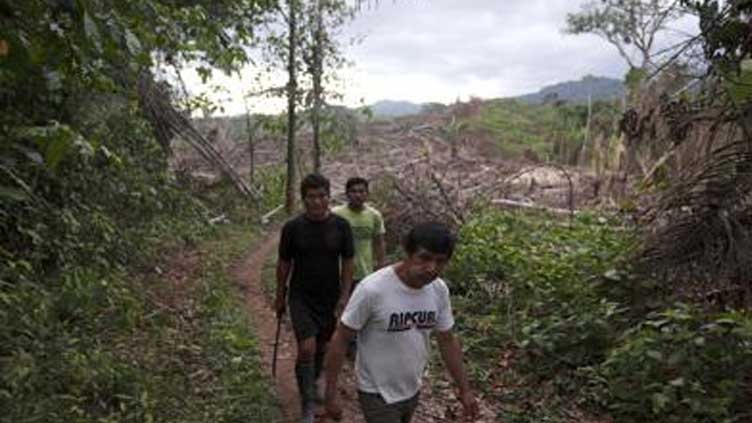In Peru, Kichwa tribe wants compensation for carbon credits

World
In Peru, Kichwa tribe wants compensation for carbon credits
SAN MARTIN (AP) — Rolando Zumba, a gentle 59-year-old, wept, though the moment he described took place many years ago. Nothing has been the same since that day, when a park ranger took away his hunting rifles. Now where there was once self-sufficiency, hunger has stalked his village.
Zumba’s story has its roots in the 2001 creation of Peru’s Cordillera Azul National Park, a stretch of Peruvian Amazon rainforest in the foothills of the Andes where clouds cling to the treetops and morning mists settle over powerful rivers. His story is linked to faraway oil giants Shell and TotalEnergies, who bought carbon credits from the park.
One day while hunting in the forest that is now within the park, Zumba said his rifles were seized by armed guards who worked for CIMA, the Spanish acronym for the non-profit set up to protect the national park. When the park was established, Kichwa tribe members like Zumba lost unfettered access to what an Associated Press investigation has found was almost certainly their ancestral land.
In 2013, Zumba’s livelihood would then take another hit: a pestilence decimated his small cacao plantation and to this day he doesn’t have the $1,500 necessary to replant. Meanwhile, just 1.5 miles (2.4 kilometers) away, many millions of dollars in oil money began flowing into former tribal territory. Over the last eight years, the park’s management has arranged to sell some 28 million carbon credits, bringing in tens of millions of dollars, revenues that Kichwa say they have not benefited from.
“Look at the conditions we live in,” said Zumba’s neighbor Segundo Panduro, 77, chicks charging around his feet on the mud floor of his cabin. The authorities “just bring words,” he said. “You can’t live off words.”
COMMUNITY MEMORY
It’s common now for major climate polluters to pay tropical countries to keep rainforests standing. The trees absorb carbon out of the atmosphere as they grow. In return the companies get carbon credits to ostensibly cancel out their emissions, helping them comply with climate commitments. But industry guidelines require carbon credit projects to have the consent of local communities, who are also supposed to benefit.
An International Labour Organization (ILO) convention Peru signed in 1994 also says that lands traditionally used for sustenance or customs by Indigenous people belong to them, and they must consent to economic activities and receive compensation.
The Peruvian government and CIMA argue consent wasn’t required here because the park was never Kichwa land, a contention local Indigenous people flatly reject. To evaluate Kichwa claims of ownership, an AP team traveled some 300 miles over muddy roads and by river boat to seven Kichwa villages on the park’s borders.
The investigation found evidence that the villages existed in their current locations outside what is now the park long before it was delineated, and that people lived by hunting and planting inside the park. In Puerto Franco, a faded sign announced the village and a date — August 1970. A document from 1996 shows a teacher was sent to Puerto Franco that year. At the border of the park, an elder recognized fragments of old pottery on the ground as the kind his grandparents used to make.
Several villages kept logs of community activities going back decades, windows into life in the area long before the park was created. A record of community meetings in 1991 in Callanayacu village, where Zumba lives, details concern over young troublemakers and a lost pig. An entry in the diaries of Chambira community described 1996 as the “year of 6,000 tourists.” Satellite images from before the park was created show rainforest clearings for all the villages in almost identical shapes as today.


